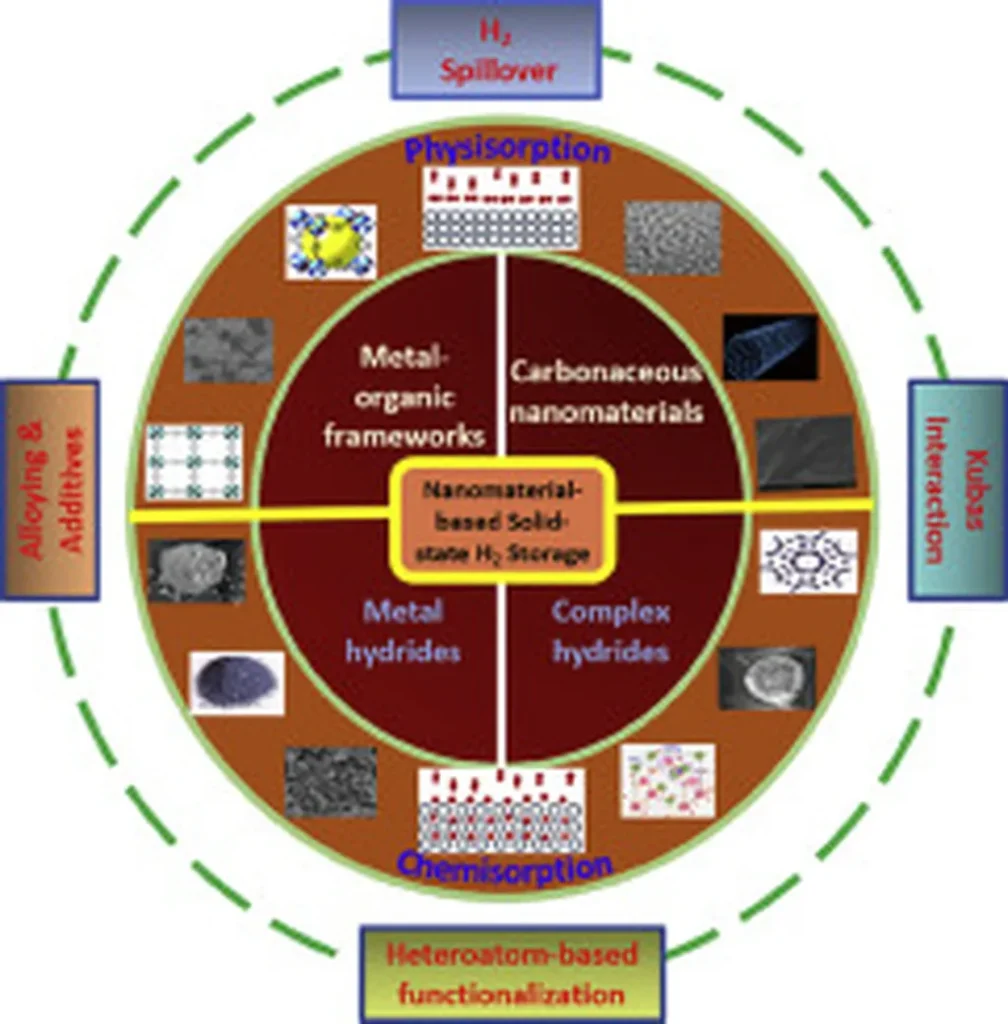In the realm of energy research, a team of scientists from the University of Innsbruck, Austria, and the Helmholtz-Zentrum Hereon, Germany, has made significant strides in understanding and improving hydrogen storage using metal hydrides. The researchers, led by Lukas Schweiger and Jürgen Eckert, have published their findings in the esteemed journal “Advanced Energy Materials.”
Metal hydrides offer a compelling alternative to traditional hydrogen storage methods, as they can store hydrogen at high densities and under safe, ambient conditions. Among these, the intermetallic compound FeTi has shown great promise. However, its practical application has been hindered by several challenges, including the need for activation, slow initial kinetics, large hysteresis, and high material costs.
To address these issues, the research team devised an innovative synthesis pathway to create nanoporous and ultra-fine porous FeTi with controlled grain and ligament sizes. This allowed them to study the resulting microstructures in detail. They discovered that surface oxides play a crucial role in confining the FeTi phase, which in turn affects the material’s hydrogen sorption properties.
The team also developed an analytical model to calculate the absorption pressure as a function of microstructure-dependent elastic stresses. They found that these stresses also influence the absorption-desorption hysteresis, a phenomenon that can hinder the efficient release and uptake of hydrogen.
This study provides a solid foundation for the systematic investigation of processing-structure-properties relations in metal hydrides, particularly FeTi. By understanding and controlling these relationships, the researchers aim to pave the way for cost-effective and efficient hydrogen storage solutions based on metal hydrides.
The practical applications of this research are significant for the energy sector. Improved hydrogen storage materials can enhance the viability of hydrogen as an energy carrier, facilitating its use in fuel cells for transportation, industry, and energy storage applications. By addressing the challenges associated with FeTi, this research brings us one step closer to realizing the full potential of metal hydrides in the energy landscape.
Source: Schweiger, L., Spieckermann, F., Burtscher, M., Wurster, S., Stock, S., Kostoglou, N., Paris, O., Schökel, A., Karimi, F., Gizer, G., Pistidda, C., Kiener, D., & Eckert, J. (2023). Core-Shell Confinement Blocks Hydride Formation: The Impact of Surface Oxides on Hydrogen Sorption in Nanoporous FeTi. Advanced Energy Materials.
This article is based on research available at arXiv.

